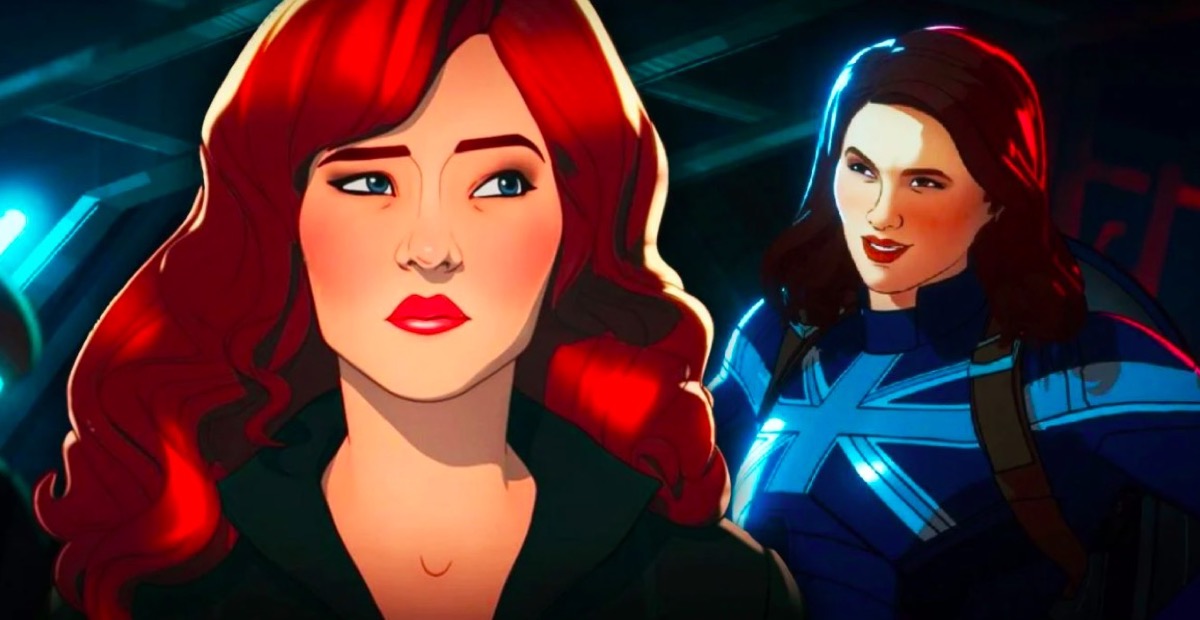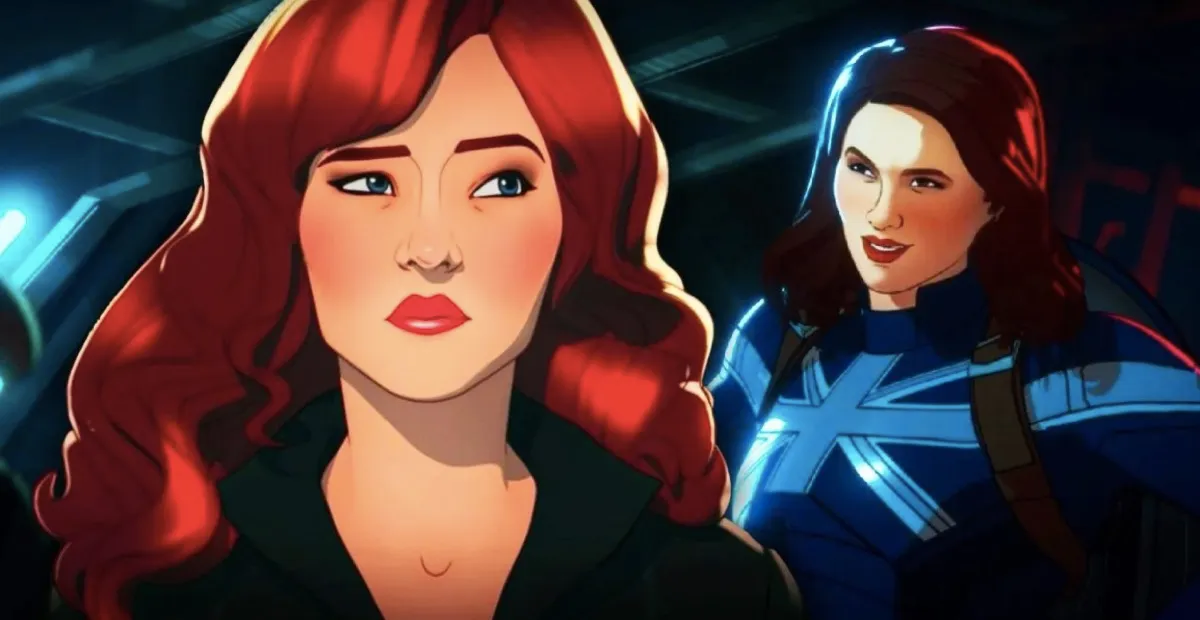Marvel’s What If…? has opened up all the possibilities for what the Marvel Cinematic Universe can do with our beloved heroes, but especially our heroines.
From the very first episode, the animated, alt-universe Disney+ series focuses on the misrepresented heroines of the MCU with a look into a universe where Peggy Carter becomes a super-soldier instead of our very own Captain America, Steve Rogers. Peggy has always been a kickass fan favorite but has had an unfortunate history of being screwed over by the MCU, from her TV show being canceled after 2 seasons to her ex-BF making out with her niece days after her wedding, to not getting even a voice line in Avengers: Endgame—which while making Steve/Peggy endgame, also relegated her to the “reward” love interest for the “real” hero.
Captain Carter’s appearance in What If…? makes her the main character of her story, while also reiterating that she loved Steve for who he was before the serum, and loves just about every (good) version of him. In the end, her happy ending is the same as Steve’s, and that’s coming home to and having a dance with the person they love.
Another standout is Gamora, who, despite only appearing in one episode, is given a prominent role as Thanos’ light-side counterpart. Instead of being fridged in order for her father to gain an infinity stone, she is the one who slayed the Mad Titan of her universe. And the weapon she used to do it? The “Infinity Crusher,” a weapon powered by the Soul stone, AKA the very stone she was murdered for in the main MCU timeline. Talk about reclamation and retribution. Hopefully we get a full episode of her and Mecha!Tony Stark in season 2.
Speaking of reclamation, in the “Ultron Wins” universe, Clint is the one to sacrifice himself for Natasha, allowing her to save the multiverse and eventually move on from the tragedies of her past. Endgame devalued Natasha, for being a childless orphan with no blood family, to the point that they didn’t even give her an onscreen funeral. What If…? showcases Natasha as a powerhouse survivor who is just as valuable and heroic and deserving of a happy ending as any other Avenger, to the point that the Watcher breaks his rules and allows her to go to another universe just in time to save her father-figure, Nick Fury (who, remember, we never got to hear a word from about her death in Endgame).
Also, Natasha and Peggy’s friendship is a wonderful female friendship that spans and saves literal universes (especially important since before the Black Widow movie, Natasha had very few female friends).

The Mary Sue’s own Rachel Leishman also wrote an article about how Doctor Strange’s episode is a commentary on the act of “fridging,” or killing a woman (usually a love interest) to motivate a male character’s actions, and how claiming ownership of a woman to the point of betraying who they are turned Doctor Strange into a villain. A similar story is told with Hank Pym, after his daughter Hope dies in following in her mother’s footsteps and becoming an agent of SHIELD. In any case, men going on rampages of revenge or literally destroying the universe to save or avenge the women they love are not treated as heroes but as the villains they are.
There are layers to What If…?’s varied characterization
We also have an interesting dichotomy in Jane Foster and Captain Marvel and their response to “only child Thor.” While Jane Foster is an intelligent woman, a literal scientist, she is not immune to Thor’s charms and ultimately falls in love with him even more quickly than in the main MCU timeline. But the story doesn’t treat her as silly or naive, and her appeal to emotion by calling Thor’s mother ends up being the best, least-violent solution compared to the Tesseract-powered punches and literal nukes Captain Marvel and Maria Hill were prepared to dish out.
Meanwhile, Captain Marvel’s cold, hard, no-nonsense personality clearly clashes with Frat Boy Thor. However, she does help cover for him after he risks getting caught by his mother, showing her softer, more forgiving side in the end. Having the unique combo of Jane and Carol provide contrast to each other shows how there’s no one right way to be a heroine.
What If…? is also not afraid to point out how female characters can act selfishly or make mistakes, like how Hope VanDyne’s efforts to recklessly save her mother resulted in the zombie apocalypse, or how Natasha forcefully injecting Tony Stark without his permission could easily go wrong, or Queen Ramonda being tricked by Killmonger just like everyone else. It shows female characters as complex people who make mistakes and have to work to correct their wrongs, just as everyone else does.
There’s also just a wealth of gems scattered throughout the series. There’s the Ancient One calling Strange out on his self-centered arrogance, the reveal of Queen Ramonda as a former General of the Dora Milaje and fighting to “avenge” her son, and pre-teen Shuri being the one to pull off the coup against Killmonger (with help from Pepper Potts, who is the only one who sees through Killmonger from the start). There’s Betty Ross from The Incredible Hulk actually being acknowledged, Natasha calling the Watcher on his BS, all of Zombie!Wanda, Nebula getting better closure with her (formerly) abusive adopted father Thanos, and Carina getting her justice 7 years after her first attempt to free herself from the Collector in Guardians of the Galaxy.
In short, Marvel’s What If…? is an Infinity Stone that shows us the potential of Marvel heroines and their stories, and my greatest hope is that the representation we see here can be replicated on the big screen in the movies to come, but also hopefully continued in the Disney+ series. #Season2WhatIf?
(images: Marvel Entertainment)
Want more stories like this? Become a subscriber and support the site!
—The Mary Sue has a strict comment policy that forbids, but is not limited to, personal insults toward anyone, hate speech, and trolling.—
This article includes affiliate links, which may provide small compensation to The Mary Sue.










Published: Nov 8, 2021 05:10 pm